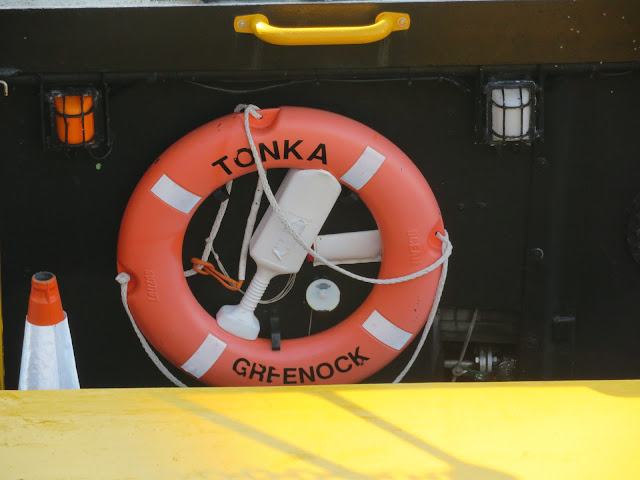I came across some interesting information about Joseph Dhanis, shipbroker who lived in Greenock for a number of years (from about 1863 till 1871) with his family. While in Greenock he lived at Mount View Cottage and later the 1871 Census shows him living at 21 Brisbane Street with his wife, an Irish woman – Bridget Maher and two
children - Cornelin who was born in Australia in 1860 and Francis who was born in London
in 1861. The couple had four more
children all born in Greenock – Marie Michael (born 1863), Athanase Louis (born
1866), Josephine Carol (born 1868) and Antoine Joseph (born 1870).
Joseph Dhanis went into business in 1864 with Patrick Robertson Macdonald
and Andrew Bryde Hood – Macdonald, Hood & Co Shipbrokers of Glasgow and
Greenock. He left the company in 1867. (The company, later Guthrie, Macdonald &
Hood went on to be a successful concern.)
After their stay in Greenock, the Dhanis family moved to Dixon Street, Glasgow where Joseph carried on
business as a shipbroker. Later they moved back to Belgium. But it was Dhanis' life in Australia which proved to be interesting.
Belgian by birth, Joseph Dhanis arrived in Australia in 1851 and by 1854 was
working as a shipbroker and agent at 489 George Street, Sydney (later moving to
177 George Street). His company - J
Dhanis & Co bought and sold ships and cargoes.
In May 1855 he was appointed Royal Hanovarian Consul for Sydney. A notice in the Sydney press states that “Mr
Dhanis was the first merchant in this colony to introduce a direct importation
from Holland to here ...”. The company then moved to premises at Macquarrie Place in Sydney.

By February 1858, Dhanis was declared bankrupt. However that did not stop him from marrying Irishwoman Briget Maher at St Mary's in Sydney on 16 July 1859. Shortly thereafter they moved to Melbourne where, in October, Dhanis was arrested for “obtaining money by means of false representation”. The amount involved was a cheque for £3, but
Dhanis had no funds at the bank to honour the cheque. He was found guilty and sentenced to
imprisonment at Parramatta Gaol with hard labour for twelve months.
On his release from prison and after a few
more appearances at insolvency hearings, Dhanis and family left Australia. The couple and their child travelled to London where their
son, Francis was born in 1861. From
there the next stop was Greenock and setting up business again as a shipbroker. I wonder if his partners Macdonald and Hood knew of his background? Perhaps that's why they parted company after a short time in business.
After a year or so in Glasgow the Dhanis family moved back to Belgium. Their son Francis Dhanis, just a schoolboy in Greenock, attended the Belgian Military Academy and volunteered to go to the Congo Free State where he fought against Arab slave traders. His military career in Africa reads like an adventure novel. In 1896 he was appointed Governor General and
was later given the title of Baron. In
1901 he married Baronesse Estelle de Bonhome. He died in 1909. It was said that he spoke English with a strong Scottish accent!
It is interesting to find out about the backgrounds of the very many interesting people who made Greenock their home - even if it was just for a short time.


















































